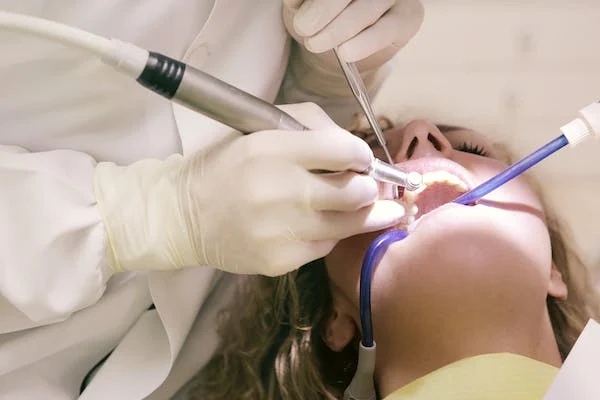Dental Onlays & Inlays in Vancouver WA

what is a dental onlay?
A dental onlay is a restoration used to fill and repair damaged or decayed teeth. It is similar to a filling, but can also be referred to as an indirect filling, as the material is applied outside of the tooth first before being cemented into place in the mouth. Onlays are typically used when more tooth structure remains than what can be replaced with a filling but less than what requires a full crown.
what are the benefits of onlays?
Onlays are porcelain restorations that provide a superior fit and aesthetically pleasing results. Unlike traditional fillings, which cover only the damaged area of the tooth, onlays restore both the cusp and surface of the tooth. This allows them to protect more of your natural tooth structure while providing a longer lasting restoration. The result is an attractive smile makeover with improved overall health benefits as well.
Onlays requires minimal removal of healthy tooth structure and is designed to act as extra support in areas where your teeth need extra reinforcement. They provide superior strength compared to traditional fillings and can last up to twice as long. Additionally, onlays are often more aesthetically pleasing than traditional fillings, due to their color-matching ability and customized fit.
Onlays also provide better protection against tooth decay and wear than other types of restorations. Since they cover more of the tooth structure, they effectively seal out food particles and bacteria that can cause cavities or gum disease. Onlays help reduce sensitivity to hot or cold temperatures by providing an additional layer of insulation for your teeth.
Onlays are a great way to improve the overall health and aesthetic look of your smile in one procedure. With proper care, onlay restorations can last up to 20 years or longer — making them an excellent, long-term investment.
onlay vs dental crowns
Dental crowns are tooth-shaped caps that completely cover damaged or decayed teeth. These caps protect the remaining healthy parts of the tooth, while also restoring the tooth’s shape and size.
Onlays, on the other hand, are custom fillings made from porcelain or composite materials that bond directly to existing teeth to repair damage caused by decay or fractures.
Crowns are more invasive than onlays, as they require more of the natural tooth to be removed in order to accommodate the crown. Onlays, however, are less invasive and cause minimal damage to the existing structure of the tooth.
The cost of onlay treatment is typically lower than that for dental crowns – however, the final cost depends on several factors such as the number and severity of damaged teeth and your insurance coverage.
Speak with one of our dentists to know which option is best for you based on your individual needs and budget.
disadvantages and advantages of onlays
Onlays are a popular dental restoration procedure used to improve the overall appearance of your teeth. However, they do come with certain disadvantages and advantages that you should consider before deciding on this treatment.
advantages
- Onlays look and feel more natural than some other dental restorations, such as crowns or veneers.
- They are a good option for patients who don’t want to go through the hassle of having multiple visits for treatment.
- Onlays can help to prevent further decay or damage to the tooth by covering any existing problems that may have been caused by cavities or fractures.
- Onlays requires less removal of healthy teeth structure compared to other types of restoration treatments.
- The material used to create onlays can be color-matched to the surrounding teeth for a seamless, natural look.
disadvantages
- Onlays require multiple visits to your dentist for preparation, fitting, and placement of the material.
- They can be more expensive than other dental treatments due to the time and materials involved.
- Onlays don’t last as long as crowns or veneers; they may have to be replaced every five to ten years depending on wear and tear.
- Not all patients are suitable candidates for onlay restorations; it is important that your dentist evaluates your individual needs before deciding whether or not they are right for you.
If you’re thinking about getting some work done on your teeth, it’s worth having a chat with your dentist first to weigh up all the pros and cons of onlays. That way they can give you personalized advice based on what you want to achieve with your new smile makeover.
what is a dental inlay?
A dental inlay is a custom-made restoration used to repair damaged teeth. The restoration fits into the cavity of the affected tooth, replacing lost or damaged enamel.
Unlike fillings which are molded and placed directly into the affected area, inlays require more detailed fabrication and must be created in a lab before being applied to the tooth. Inlays are typically made from porcelain, gold, composite resin or ceramic materials.
benefits of getting a dental inlay
Getting a dental inlay can provide you with the perfect smile makeover. Here are some of the benefits you could enjoy:
- Improved Appearance: Dental inlays are made from highly durable materials, so they look and feel just like natural teeth. This helps your mouth blend together seamlessly for a more uniform aesthetic. Plus, they come in a variety of colors to match the rest of your teeth perfectly.
- Increased Strength: Dental inlays create strong bonds between damaged areas and your remaining tooth structure, giving them additional reinforcement against wear and tear. This makes them perfect for restoring heavily worn or cracked teeth.
- Long-Lasting Results: With proper care and maintenance, dental inlays can last up to 30 years. That means you won’t have to worry about them wearing out or needing replacement any time soon.
- Improved Oral Health: Unlike some other restoration methods, dental inlays don’t require extensive preparation of your existing tooth structure. This helps preserve your natural enamel and reduces the risk for further damage.
If you’re looking for an easy way to upgrade your smile, dental inlays may be just what you need! Contact your dentist today to learn more about how this treatment could benefit you.
the different types of dental inlays available
There are three main types of dental inlays available: porcelain, composite resin, and gold alloy.
Porcelain is the most popular choice for its durability and aesthetics. It is very stain-resistant, so it tends to look like a natural part of your teeth for longer periods of time than other materials.
Composite resin inlays are less expensive than porcelain but not as strong or long-lasting; however they can be tinted to match the color of your existing teeth for a more seamless look.
Finally, gold alloy inlays are incredibly durable and low maintenance, but are much more expensive than other options.
what to expect after the procedure
Once you have undergone the dental inlay procedure, there are a few things that you should expect. Immediately after your procedure, your teeth and gums may be tender or sore.
Your dentist will likely provide you with instructions on how to care for your teeth during this recovery period, such as avoiding hard or sticky foods and taking medications to reduce discomfort. You may also experience some sensitivity to hot and cold temperatures when eating and drinking for up to four weeks following the inlay placement.
Your dentist will keep an eye on the healing process of your mouth by taking X-rays or doing other follow-up visits. In most cases, it takes only one appointment for dental inlays but if more than one is necessary, be sure to follow your dentist’s instructions.
Your new inlays should last for many years with good oral hygiene and regular dental visits. Dental inlays can dramatically improve the look of your smile, making it brighter and healthier.


